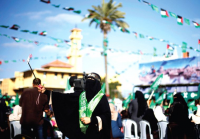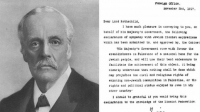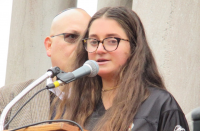
Links
Sheba Medical Centre
Melanie Phillips
Shariah Finance Watch
Australian Islamist Monitor - MultiFaith
West Australian Friends of Israel
Why Israel is at war
Lozowick Blog
NeoZionoid The NeoZionoiZeoN blog
Blank pages of the age
Silent Runnings
Jewish Issues watchdog
Discover more about Israel advocacy
Zionists the creation of Israel
Dissecting the Left
Paula says
Perspectives on Israel - Zionists
Zionism & Israel Information Center
Zionism educational seminars
Christian dhimmitude
Forum on Mideast
Israel Blog - documents terror war against Israelis
Zionism on the web
RECOMMENDED: newsback News discussion community
RSS Feed software from CarP
International law, Arab-Israeli conflict
Think-Israel
The Big Lies
Shmloozing with terrorists
IDF ON YOUTUBE
Israel's contributions to the world
MEMRI
Mark Durie Blog
The latest good news from Israel...new inventions, cures, advances.
support defenders of Israel
The Gaza War 2014
The 2014 Gaza Conflict Factual and Legal Aspects
To get maximum benefit from the ICJS website Register now. Select the topics which interest you.
Australia’s dangerous fantasy
(This article is an op-ed piece by Eva Sallis [her bio′s are below] from the New York Times. ICJS Executive place the article here and ask the rhetorical question: If the New York Times chooses a person with strong connections to the Arab world, and connected with Lebanon in particular to write their main OP-ED piece on Cronulla whose side do you think she′ll be on?
Could′t the NYT have selected Sheehan, Lapkin, Parkinson, Albrechtsen for their unbiased OP-ED piece? Or alternatively couldn′t they have balanced this piece by Sallis with something from Tim Priest, Andrew Bolt, or Gerard Henderson? Comments?)
Eva Sallis was born in Bendigo in 1964. She is a writer of literary fiction and non-fiction. Many of her works explore ideas on culture, exile and belonging. Her first novel Hiam won The Australian/Vogel Literary Award for 1997, the Nita May Dobbie Literary Award and was shortlisted for the Courier-Mail Book of the Year 1999 and the National Fiction Award 2000. Her second novel, The City of Sealions, explores ideas on cultural and communal alienation and identity. Her novel in stories entitled Mahjar (2003) explores the experiences of several generations of migrants and refugees from the Arab world and, through individual stories and characters, the loss and gain of exile and of provisional identities.
Other works include a book of literary criticism on the Arabian Nights, Sheherazade through the Looking Glass: the Metamorphosis of the 1001 Nights; and a number of short stories, poems, academic and literary articles, and reviews.
Her latest book Fire Fire, (Allen&Unwin 2004) takes a skewed look at Australian identity and family.
Eva Sallis studied Arabic for seven years and travels regularly to the Middle East, particularly Yemen and Lebanon. She has an MA on the poetry of T.S. Eliot and the Philosophy of F. H. Bradley; and a PhD, in which she explored the many versions of the Arabian Nights. She is a Visiting Research Fellow at the University of Adelaide.
She is co-founder of Australians Against Racism, an organisation that seeks to raise public awareness of the experiences of refugees and asylum seekers, through media, arts and education. She scripted the controversial television commercial ‘Faces in the Crowd’, aired in 2001 on Human Rights Day. She devised and coordinated the Australia IS Refugees! Schools competition 2002. The anthology Dark Dreams: Australian Refugee Stories (Wakefield 2004) publishes 37 of the finest stories.
Adelaide, Australia
Last Sunday on Cronulla Beach, a suburb of Sydney, thousands of drunken white youths attacked anyone they believed was of Arab descent. Inspired by reports that Lebanese-Australians had assaulted two white lifeguards, text messages calling for a Lebanese "bashing day" appeared on thousands of cellphones. Some of Sunday′s assailants wore T-shirts that proclaimed, "We grew here; you flew here," or, "Ethnic cleansing unit."
For many, the Cronulla Beach incident did not come as a surprise. Rather, it was the bubbling up of an undercurrent that is increasingly evident in Australian life.
Newcomers, especially those who form linguistic or ethnically distinct groups, always have a hard time in Australia at first. But Australia is a country that has been created by many streams of immigrants and has come out the better for it. Greeks and Italians are among the largest non-Anglo groups and are fully integrated. Melbourne has the world′s third largest Greek community. Vietnamese immigrants experienced racism and hostility when they first arrived in the late 70′s and early 80′s, but time, and the entry of increasing numbers of Vietnamese-Australians into public life, have eroded that prejudice.
While this country is less diverse than the United States, its minority communities are a core part of its national identity. The notion of an all-white Australia is a fantasy and an anachronism. No dark-haired, dark-eyed Australian would have been safe on Cronulla Beach last Sunday, yet Australia is - has always been - substantially dark-haired and dark-eyed. And the expressed hostility toward "Lebs" as recent intruders belies the history of Australia, where people of Lebanese ancestry have lived for more than a century.
Several recent events have made this latest eruption of racism and xenophobia different from those of the past. While denying even that racism exists, our leaders have given tacit approval and support for it through policy, whether this is policy on refugees, security or Indigenous affairs. The policy of mandatory detention of asylum seekers was strongly linked with border protection from 2001, and, as most asylum seekers of recent years have been from the Middle East and Muslim South Asia, "border protection" has become protection from Muslim refugees in the popular imagination.
Like the United States, Australia has new anti-terrorism legislation, first passed in 2002 and significantly strengthened just recently. Such laws have helped to validate broader community mistrust of Arab and Muslim Australians.
Our government has done little to substantively allay fear of Muslim and Middle Eastern Australians generally or to increase public understanding and appreciation of their culture and contribution to Australian life. Arabic is the fourth most commonly used language after English in Australia, and the most commonly used language after English in New South Wales, Sydney′s home state, yet it is taught in only a handful of schools and universities.
In the last five years there has also been evidence of an increase in violence toward people of Arab appearance. An Iraqi writer I know begged his wife and daughter to stop wearing the hijab because of the potential of violence on the street. An Afghan refugee taxi driver in Adelaide said to my partner last night that he thought he would have to quit because his younger passengers were so nasty. In recent years high-profile cases in which Arab-Australian youths were charged with violent crimes generated a storm in the news media, as well as unchecked vilification on talk radio.
Prejudice creates what it fears by curtailing young people′s prospects. Young Arab-Australians are increasingly ghettoized in Sydney′s poor suburbs, where they struggle for education and jobs. Their families are often prejudiced against non-Arab Australians; the racism of the minority and that of the broader society reinforce each other.
I have Muslim friends who used to feel that they were Australians, but now cannot identify themselves in the negative space created for them in our community. I have non-Muslim friends who are furious at being mistaken for Muslims because of their Middle Eastern background; they are doing all they can to differentiate themselves from people they too are starting to openly dismiss. It has become fashionable, perhaps, to be racist, although none of us, not even our prime minister, is willing to call it what it is.
What happened on Cronulla Beach warns us that our self-inflicted wounds are festering. A volatile part of our community is deeply alienated, unable to belong, and another volatile part has retreated to an irretrievable past and a mythical notion of racial purity. If contemporary Australians are to live at ease with ourselves, we need more education, less fear mongering and, not least, greater honesty about the culture of racism that is so damaging us.
# reads: 228
Original piece is http://www.nytimes.com/2005/12/17/opinion/17sallis.html





















